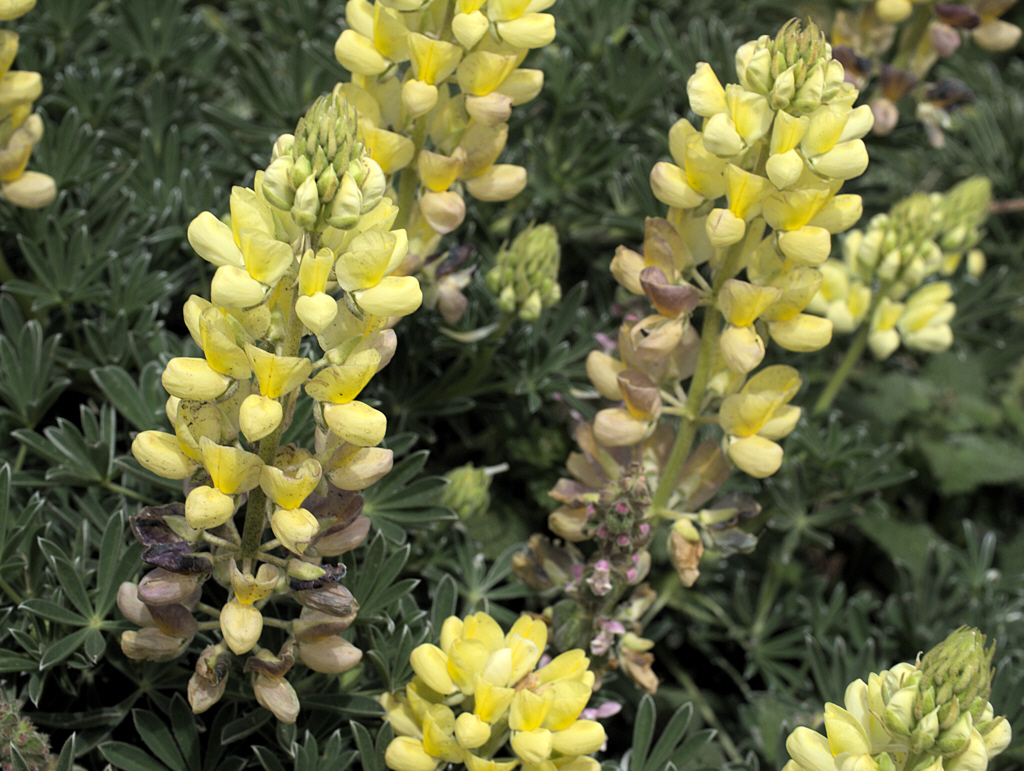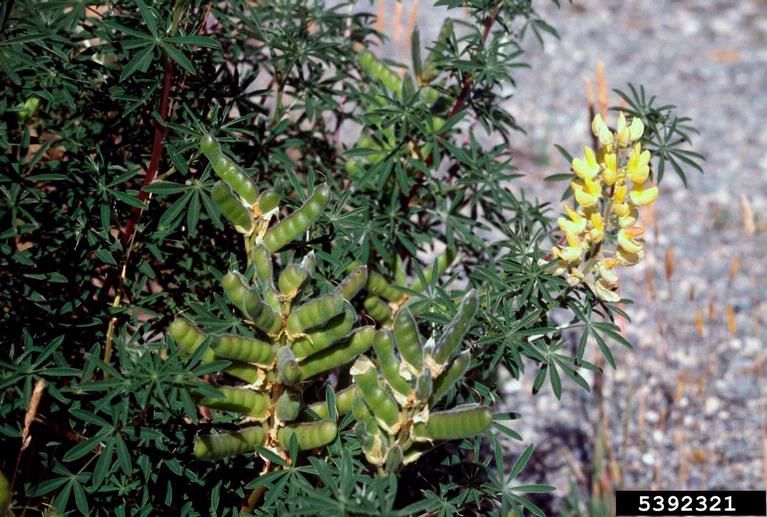Yellow Bush Lupine

Yellow Bush Lupine
(Lupinus arboreus)
Priority: - Established / Strategic Control
Tags: Terrestrial
Identification and Reproduction
Identification:
- Yellow bush lupine is also known as tree lupine. This flowering plant is in the legume Fabaceae family.
- It is an evergreen shrub growing up to 2 m tall.
- Leaves are green to greyish green and are palmate. There are 5 to 12 leaflets on each leaf. Leaves are also covered in fine silky hairs.
- Flowers are found in a terminal stalked raceme, light yelllow, pea-like and very fragrant. Blooms occur in the spring. In certain locations flowers can be blue, liliac of purple.
- Seedpods are 4-6cm long, hairy and contain 8-12 seeds each.
Reproduction:
- Yellow bush lupine only reproduces by seed.
- It is a prolific seed producer and seeds are very persistent.
- Seedpods will explode and disperse seeds short distances.
Habitat & Ecology
- It prefers well-draining soil but an grow in nutrient-poor sites.
- It is shade intolerant but drought tolerant.
- Yellow bush lupine can withstand temperatures that reach −12 °C.
- Typically found on rock bluffs, dunes, and steep slopes.
Impacts
Ecological:
- It is a good nitrogen fixer and will alter the soil chemistry of the environment. This can inhibit the growth of native plants that are adapted to low nitrogen levels.
- It is capable of hybridizing with native lupines and can threaten the native ecosystem.
Management
Prevention is a high priority for this plant.
- Do not plant or distribute this plant.
- If you have a flower arrangement with this plant please dry and dispose of it in the garbage.
Mechanical/Manual Control:
- Manual eradication is the most effective method. This includes hand-pulling and weed wrenching. These techniques remove the roots entirely and lead to eventual death.
- Plants should be removed prior to seed set in June.
- Remove yellow bush lupine as early as possible, before they are able to cause permenant damage to the soil chemistry.
- Depending on the stage of infestation, native plants may need to be replanted to help restore the environment.
Resources
For more information check out the University of Minnesota: Department of Horticultural Science's Restoration and Reclamation Review here.
For more details on historic and managment controls please check out the Cal-IPC's plant report on Lupinus arboreus.
Header photo (Krzysxtof Ziarnek).




